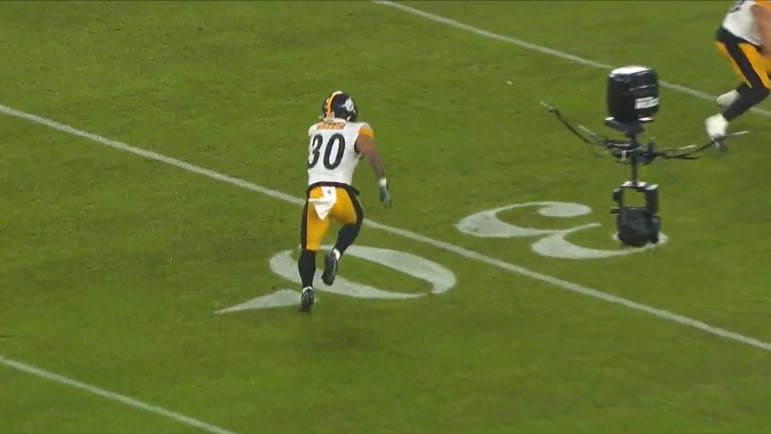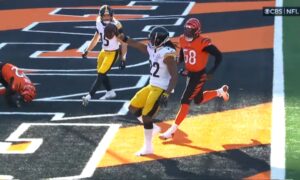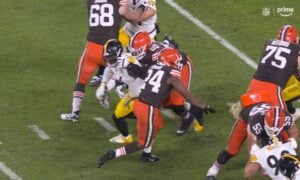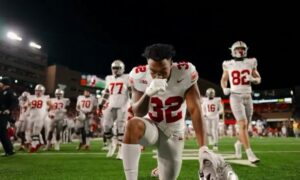Arthur Smith will bring big differences to the Pittsburgh Steelers offense. More play-action, more tight ends, and hopefully, more points. Those are all aspects heavily discussed even before camp began, though it’s been furthered by what the team has done through the first five practices. One less talked about element he’ll revive is the running back screen game. So far, it’s been a staple of the Steelers’ short passing game.
Through the first five practices, the team has run a running back screen at least one per day. Based on my charting and notes, they’ve called nine total throughout the team’s 11-on-11 sessions. While that’s not a number, understand that’s a decent percentage considering the finite number of throws in any given practice. Sometimes, that’s as few as 20 total throws. Other times, the situation they’re repping, like 3rd and long, doesn’t lend itself to practicing them.
Here are the daily logs.
Steelers Called RB Screens
Day 1. Three Plays
Day 2. One Play
Day 3. One Play
Day 4. Three Plays
Day 5. One Play
A clear pattern and I’m sure designed and built out by that day’s practice call sheet. These plays certainly aren’t random or determined on the spot. And that doesn’t even count the quasi-screens of having the running back jet to the flats with a tight end releasing in front as a long lead blocker. Functionally, a screen or extension of the run game, turning an I-form lead block run and mirroring it on the perimeter.
Matt Canada called running back screens in camp and in the regular season. But not to that level of frequency and certainly not to any level of success. Pittsburgh hasn’t been a competent screen team since the Le’Veon Bell days nearly a decade ago. Since, it’s hardly been part of their offense and disasters the few times they’ve been called. Whether it’s an ineligible man downfield penalty or just plain bad blocking, they’ve not been successful.
In camp, it’s hard to determine how much more successful things will be under Smith. The results so far have been a mixed bag. Some have worked, some have failed, and the jury’s still out on what things will look like come September. But we’re going to see it. There’s reason to believe it will work. Pittsburgh has two capable pass-catching backs in Najee Harris and Jaylen Warren.
Harris had 74 receptions as a rookie while Warren finished second on the team with 61 receptions last year. With their size and power, they can be a threat in open grass to break the tackle of a defensive back and rattle off a good gain. Warren’s burst and speed makes him more of a home run threat. Heck, even Cordarrelle Patterson could get a look here, a college receiver with nearly 300 NFL receptions and 16 scores.
More importantly is the construction of the Steelers’ line. They’re young and athletic, especially if Troy Fautanu gets the nod at right tackle. But for screens to work, it’s more than just having athletes. There has to be timing and discipline. The quarterback has to sell the fake with his eyes, keeping them downfield instead of staring down the back immediately or else the d-line will be tipped off.
The o-line has to show timing to know how to sell the initial pocket before pulling out into space without getting too far down field and penalized. The back has to slow-play his release enough to sell it and everyone has to navigate their place within the blocking scheme, the back not getting too far out in front. It’s a coordinated dance than individual effort or traits-based outcome.
Running back screen data can be difficult to readily find. But with Smith in Atlanta last season, RB Bijan Robinson tied for second in targets among the position with 86, only trailing the New York Jets’ Breece Hall. For context, Harris and Warren combined for 99. That doesn’t parse out how many of them were screens but the Steelers can use their backs as a weapon of the pass game, especially with limited wide receiver options.
Based on what camp has shown so far, the Steelers are working hard to get it right so they can lean on the RB screen game in 2024 more than they have in years.








